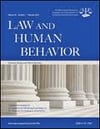
Police-induced confessions can strip an innocent confessor of a vital source of exculpatory evidence, an alibi witness. This is the bottom line of a recently published article in Law and Human Behavior. Below is a summary of the research and findings as well as a translation of this research into practice.

Featured Article | Law and Human Behavior | 2016, Vol. 40, No. 1, [65-71]
Lost Proof of Innocence: The Impact of Confessions on Alibi Witnesses
Authors
Stéphanie B. Marion, Ryerson University
Jeff Kukucka, Towson University
Carisa Collins, John Jay College of Criminal Justice
Saul M. Kassin, John Jay College of Criminal Justice
Tara M. Burke, Tyerson University
Abstract
The present study investigated how alibi witnesses react in the face of an innocent suspect’s confession. Under the pretext of a problem-solving study, a participant and confederate completed a series of tasks in the same testing room. The confederate was subsequently accused of stealing money from an adjacent office during the study session. After initially corroborating the innocent confederate’s alibi that she never left the testing room, only 45% of participants maintained their support of that alibi once informed that the confederate had confessed (vs. 95% when participants believed the confederate had denied involvement). Even fewer (20%) maintained their corroboration when the experimenter insinuated that their support of the alibi might imply their complicity. The presence of a confession also decreased participants’ confidence in the accuracy of the alibi and their belief in the confederate’s innocence. These findings suggest that a police-induced confession can strip an innocent confessor of a vital source of exculpatory evidence. This effect may well explain the often-puzzling absence of exculpatory evidence in many cases involving wrongful conviction.
Keywords
alibi witness, false confessions, psychology and law, wrongful convictions
Summary of the Research
Introduction
“Since 1989, more than 1,400 wrongful convictions of innocent people have been exposed in the United States—either through DNA testing or via the discovery of other types of evidence. Two vexing questions have arisen from the study of wrongful convictions. The first concerns the question of what erroneous incriminating evidence was used to convict these innocent people. Of great relevance to psychological science, investigations into these cases have indicated that the predominant contributing factors are mistaken eyewitness identifications, flawed forensic science conclusions, coerced false confessions, and informants who were incentivized by prosecutors” (p. 65).
“The second vexing question concerns the lack of persuasive evidence of innocence in these case files. People who are absent from the crime scene at a particular time often have alibis that are corroborated by either physical evidence (e.g., surveillance video footage, time-stamped receipts) or witness evidence (e.g., from friends, family, strangers, or coworkers who vouch for their whereabouts). However, because certain types of corroborating evidence are perceived as more credible than others (e.g., physical evidence vs. witness evidence, strangers vs. family members), it is not surprising that many wrongfully convicted defendants had presented alibi witnesses at trial who were not sufficiently convincing to judges and juries. A more troublesome problem is that some wrongfully convicted defendants could not generate and validate accurate alibis for a specific time and place—and worse, that some alibi witnesses they had identified withdrew their initial support and did not appear at trial. This latter possibility is suggested by numerous cases in which an innocent defendant had confessed to police—and the confession corrupted other evidence” (p. 65).
“Recent research has shown that a belief in a suspect’s guilt can corrupt people’s perceptions of whether degraded speech recordings betray incriminating remarks, whether a facial composite resembles a suspect, whether a suspect’s handwriting is similar to that appearing in a bank robbery note, whether ambiguous polygraph charts indicate deception, and even whether a suspect is included or excluded in a complex DNA mixture. Confessions can also influence eyewitness identifications. Although the aforementioned studies indicate that confessions can spawn other incriminating evidence, it is also possible that confessions can suppress exculpatory alibi evidence that could prevent wrongful convictions” (p. 65-66).
“There are two bases for the expectation that confessions might suppress alibi evidence. First, research shows that confessions are powerfully incriminating—more so than other forms of evidence. Hence, studies have shown that mock jurors and judges do not adequately discount confessions—even when they are retracted and perceived to have been coerced. Most people believe they would never confess to a crime they did not commit, so they evaluate others accordingly and treat confessions with uncritical acceptance. From a strictly cognitive standpoint, therefore, it stands to reason that prospective alibi witnesses might presume guilt from a suspect’s confession and question their own perceptions and memories concerning that suspect’s whereabouts at a particular time” (p. 66).
“A second possibility is that prospective alibi witnesses may become motivated to distance themselves from a suspect who had confessed for self-serving reasons—so authorities would not suspect their complicity with the confessor. The present research tested the hypothesis that confessions will lead people to recant rather than to reaffirm their alibis for an innocent person—and that this tendency would be exacerbated by an insinuation of complicity” (p. 66).
Current Study
“Under the pretext of a problem-solving study, a naïve participant and a confederate completed a series of individual and collaborative problem-solving tasks. At the end of an individual task, the experimenter informed them that a sum of cash had just been stolen from an adjacent office and asked if they had any knowledge of the alleged crime. The confederate provided a true alibi by stating that they had both been in the testing room when the cash was stolen. Participants were asked to corroborate this alibi both before (Time 1) and after (Time 2) being informed that the confederate had either denied (Denial condition) or confessed to (Confession condition) stealing the cash. In a third condition, participants were told that the confederate had confessed and that their continued corroboration of the alibi would imply their complicity in the theft (Implied Guilt condition). Data from 65 college students (mean age of 20.45 (SD = 5.53; 86% female) were retained for analysis” (p. 66).
Results
“Across all conditions and irrespective of corroboration strength, 32 of the 60 participants who corroborated the alibi at Time 1 maintained their support at Time 2. Participants in the Denial condition were more likely to maintain their corroboration at Time 2 (95%) relative to those in the Confession (45%) and Implied Guilt (20%) conditions. Although the observed difference between the Confession and Implied Guilt conditions trended in the hypothesized direction, it did not achieve statistical significance” (p. 68).
“Using only participants who gave a strong corroboration at Time 1, we then tested corroboration strength at Time 2 as a function of our manipulation. Again, a strong overall effect emerged, such that the Denial condition differed from both the Confession and Implied Guilt conditions—which did not differ. Specifically, 76.47% of strong Time 1 corroborators in the Denial condition again provided a strong corroboration at Time 2, compared with only 25% and 5.88% of those in the Confession and Implied Guilt conditions. Conversely, only 5.88% of strong Time 1 corroborators in the Denial condition fully withdrew their corroboration at Time 2, compared to 56.25% in the Confession condition and 82.35% in the Implied Guilt condition” (p. 68).
“Across all conditions, participants were moderately confident that the confederate had not left the room. However, participants in the Denial condition were more confident relative to those in the Confession and Implied Guilt conditions, which did not differ. Participants’ belief that the confederate had stolen the money was generally low. Those in the Denial condition were marginally less confident than those in the Confession and Implied Guilt conditions, which did not differ” (p. 68-69).
Discussion
“As illustrated by numerous recently discovered wrongful convictions, false confessions often trump factual innocence. Part of the problem is that confessions are powerfully persuasive as a matter of common sense, making it difficult for judges, juries, and others to discount a defendant’s confession even when it was elicited in the presence of strong situational pressures. A second and more pernicious problem, however, is that confessions—precisely because they are powerfully persuasive—can corrupt other evidence from lay witnesses and forensic examiners, producing an illusion of false support. This forensic confirmation bias has been demonstrated in laboratory experiments and also receives support in an analysis of DNA exoneration cases, where 78% of cases that involved a false confession also contained one or more other evidence errors—most of which were more likely to follow rather than precede the confession” (p. 69).
“Using a newly developed paradigm for studying alibi witnesses, the present study was designed to test the hypothesis that confessions can also trump innocence by suppressing exculpatory evidence. The results strongly supported this hypothesis. Depending on the experimental condition, participants were 10 to 16 times more likely to recant their support of the innocent confederate’s alibi after being informed that she had confessed—even though participants believed that she had immediately retracted that confession and even though they believed that their responses could carry real consequences. Participants in the confession conditions also expressed less confidence in the accuracy of the alibi and reported more doubt about the confederate’s innocence” (p. 69).
“The possibility of a second mechanism, a self-serving reason why a confession may influence alibi witnesses: That they fear being viewed as an accomplice, was also tested. This possibility may present itself whenever an alibi witness vouches for someone who later confesses, indicating guilt. In the present study, we explicitly suggested this inference to participants in the Implied Guilt condition and found that they were somewhat more likely to recant their support of the alibi than those in the mere Confession condition. It is important to note that although this latter effect was in the predicted direction, it was not significant” (p. 69).
Translating Research into Practice
“The results of this study have considerable implications for criminal justice and the safety nets in place to prevent wrongful convictions. The courts in many states demand that confessions be voluntary and corroborated to gain admissibility at trial. As in research showing that confessions can spawn other incriminating evidence, artificially increasing perceptions of guilt, our finding that confessions can suppress exculpatory evidence raises a similar concern that confessions will more easily survive scrutiny when not contradicted by exculpatory information. The suppression of alibi witnesses is also relevant at the appellate level, where appeals courts may determine that even if a confession was coerced and erroneously admitted at trial, the conviction can stand if the error was “harmless” as measured by whether the sum total of the remaining evidence was sufficient to support a jury’s conviction beyond a reasonable doubt” (p. 69).
“Several additional lines of research are also worthy of pursuit. First, it is clear that some alibi witnesses are inherently more credible than others—for example, as a function of their relationship to the defendant. In the present study, likability of the suspect was held constant at a low to moderate level. However, it is important to determine whether the confession effect observed within this laboratory paradigm is moderated by naturally occurring (e.g., friends vs. strangers) or experimentally manipulated (e.g., likability) variations in that relationship. A related implication concerns the possible effects on evidence in the form of character witnesses who would testify for the defense. Just as confessions can taint forensic examiners, eyewitnesses, and alibi witnesses, it is possible that confessions would similarly taint people’s perceptions of the defendant’s character” (p. 70).
“The possibility of a radical shift of opinion was illustrated in the wrongful conviction in Italy of Amanda Knox. Just before Knox was induced to confess to murder, she and one of her two Italian roommates, Filomena Romanelli, had spoken on the phone. Their conversation, which was recorded by police, revealed that Romanelli was friendly and empathic to Knox and that the two women were planning to look for another house so they could continue to live together. Yet subsequent to Knox’s confession, Romanelli’s opinion of Knox had soured. Ultimately, she testified as a negative character witness for the prosecution” (p. 70).
Other Interesting Tidbits for Researchers and Clinicians
“It is important to note that a confession is not the only form of incriminating evidence with the potential to deter exculpatory alibi witnesses. Over the years the accumulation of DNA exoneration cases have shown that even more wrongful convictions had involved mistaken eyewitness identifications, often more than one per case. Although mock jury research suggests that confessions are more potent than eyewitness identifications, research on eyewitness coinfluences suggests the possibility that exculpatory alibi witnesses would similarly be deterred by the competing memory of an eyewitness” (p. 70).
Join the Discussion
As always, please join the discussion below if you have thoughts or comments to add!






















